VILLA BALMAIN
MIAMI ART WEEK
Alexandre Arrechea Creates Balmain’s Villa Balmain Installation For Miami Art Week 2022
VILLA BALMAIN
Commissioned by Pierre Balmain and built by the visionary Italian architect Leonardo Ricci, Villa Balmain was constructed on the Italian isle of Elba between 1958 and 1960 and passionately preserved for decades. Today, it continues to offer a remarkable perspective on Pierre Balmain’s unique personal taste, as well as a deeper understanding of the origins of the celebrated audacity that has long set apart the designer’s eponymous French fashion house.
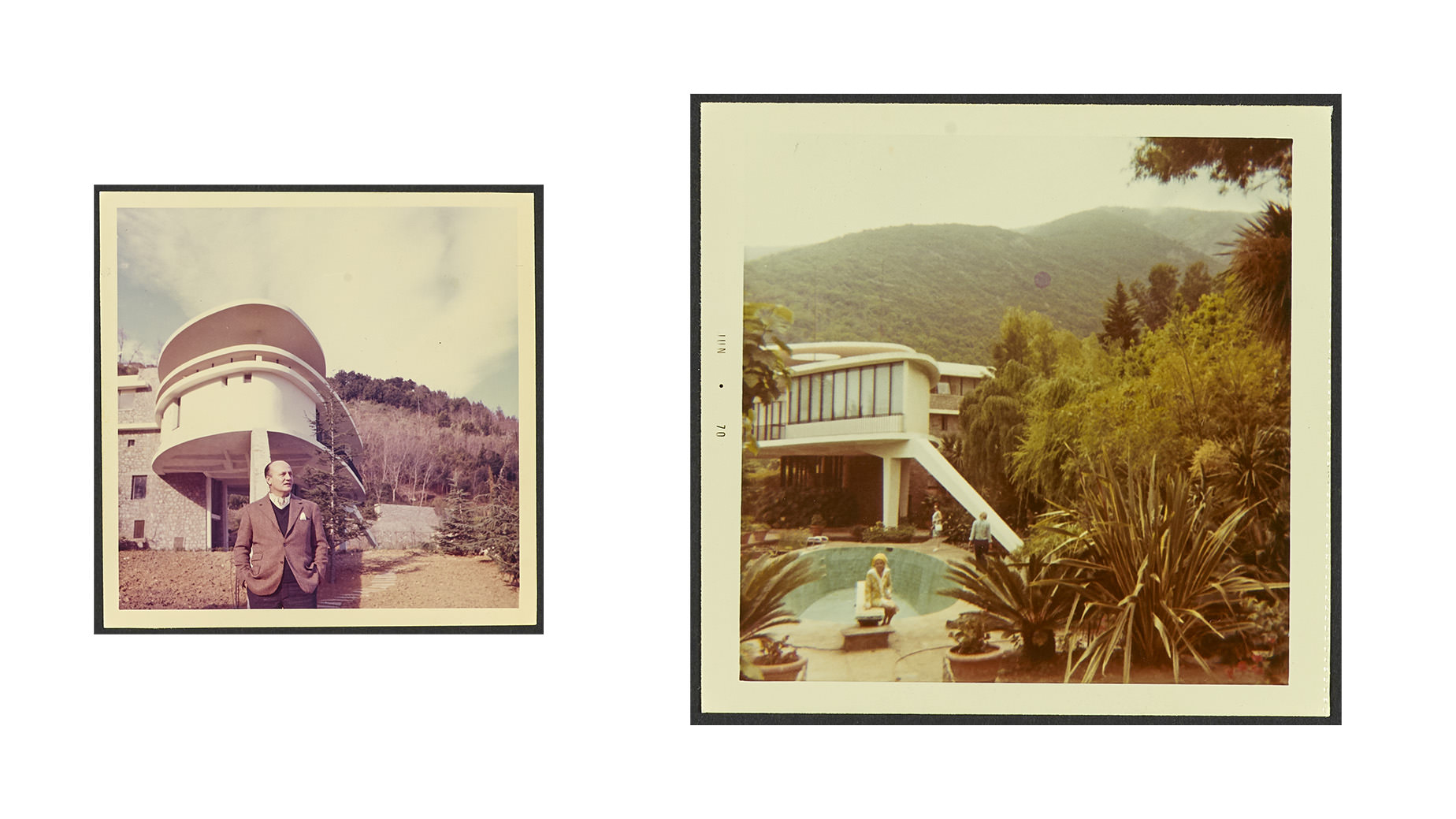
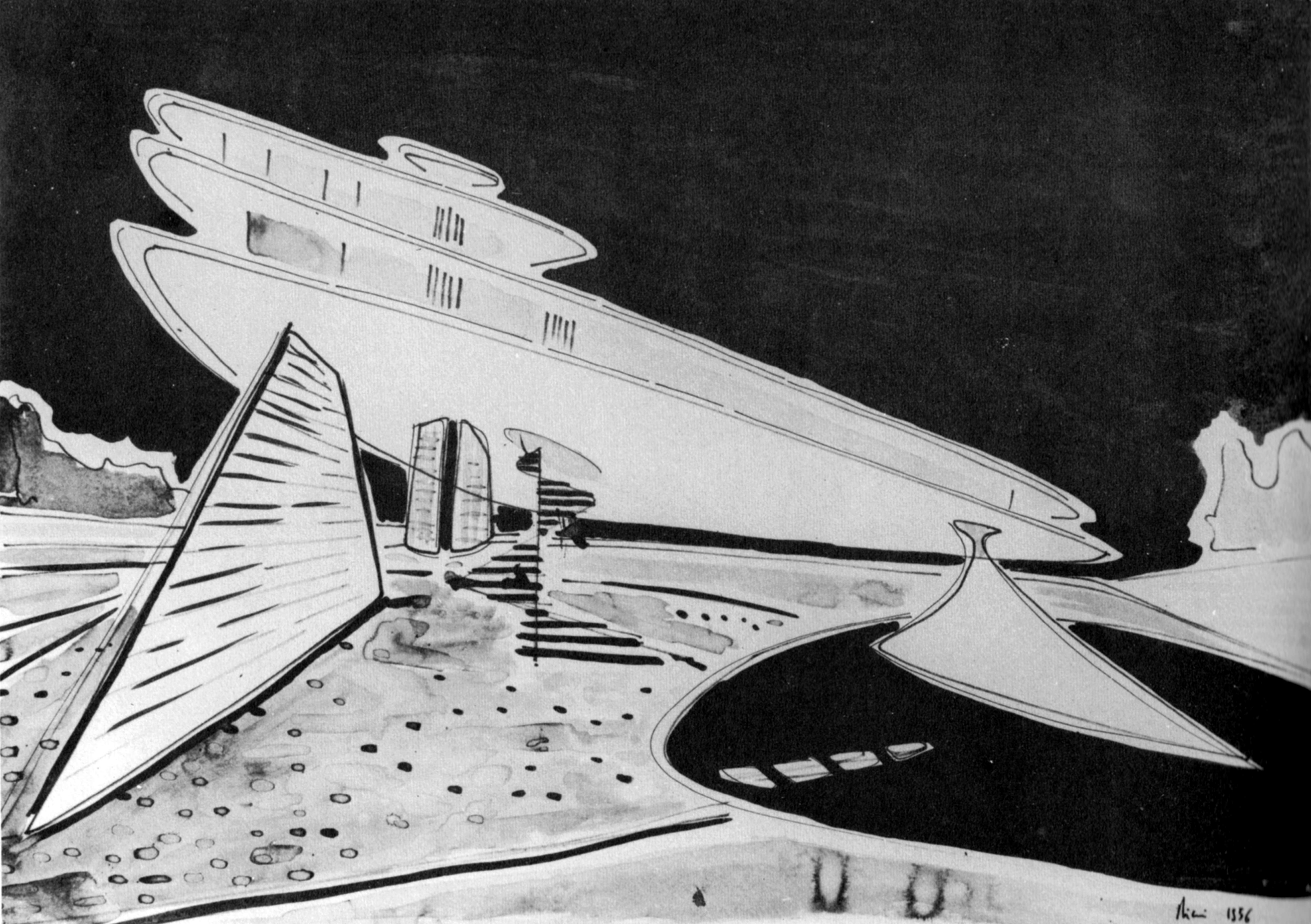
Pierre Balmain envisioned Villa Balmain as a haven of peace, far away from the frenzy of his Parisian professional life. He dreamt of a hidden, lush island escape, where he could refresh, relax and think about his next collections. The Villa’s radical elliptical architecture, constructed from both local granite and reinforced concrete, has been compared to a spaceship, a boat set for sail, and “a dragon-fly perched on the mountain-side.” Balmain himself summed it up as a “Hollywood-style” creation. Ricci’s structure capitalizes on the dynamism and fluidity of curving lines, while making very clear why the architect was recognized as a master in integrating his creations into the surrounding landscape.
Photo Credits:
01: Pierre Balmain in front of his newly built Villa Balmain, (1960); Collection: Balmain Heritage Paris; ©Balmain Heritage
02: View of the Villa Balmain pool, with the Monte Capanne mountains in the background. (1970); Collection: Balmain Heritage, Paris; ©Balmain Heritage
03: Leonardo Ricci’s original 1958 sketch for the Villa Balmain project; Published in Vagnetti L., Il linguaggio grafico dell'architetto oggi, Vitali e Ghianda, Genoa, Italy, 1965.
THE VILLA BALMAIN GARDENS
Described as “the couturier who draws gardens,” Balmain viewed a garden as “a perpetual creation.” At Villa Balmain, he enjoyed designing the beautiful grounds, with a one-of-a-kind meandering pathway reflecting the designer’s fascination with Asian cultures and creations. The Villa’s striking oval swimming-pool, inspired by Sicily’s Arethusa Fountain, is encircled by a floating garden of exotic plants, including papyrus, lotus and waterlilies. Popping up inside this green oasis are Sicilian ceramics, as well as distinctive wooden Thai sculptures that Balmain selected with the assistance of one of his house’s most loyal customers, Queen Sirikit of Thailand.
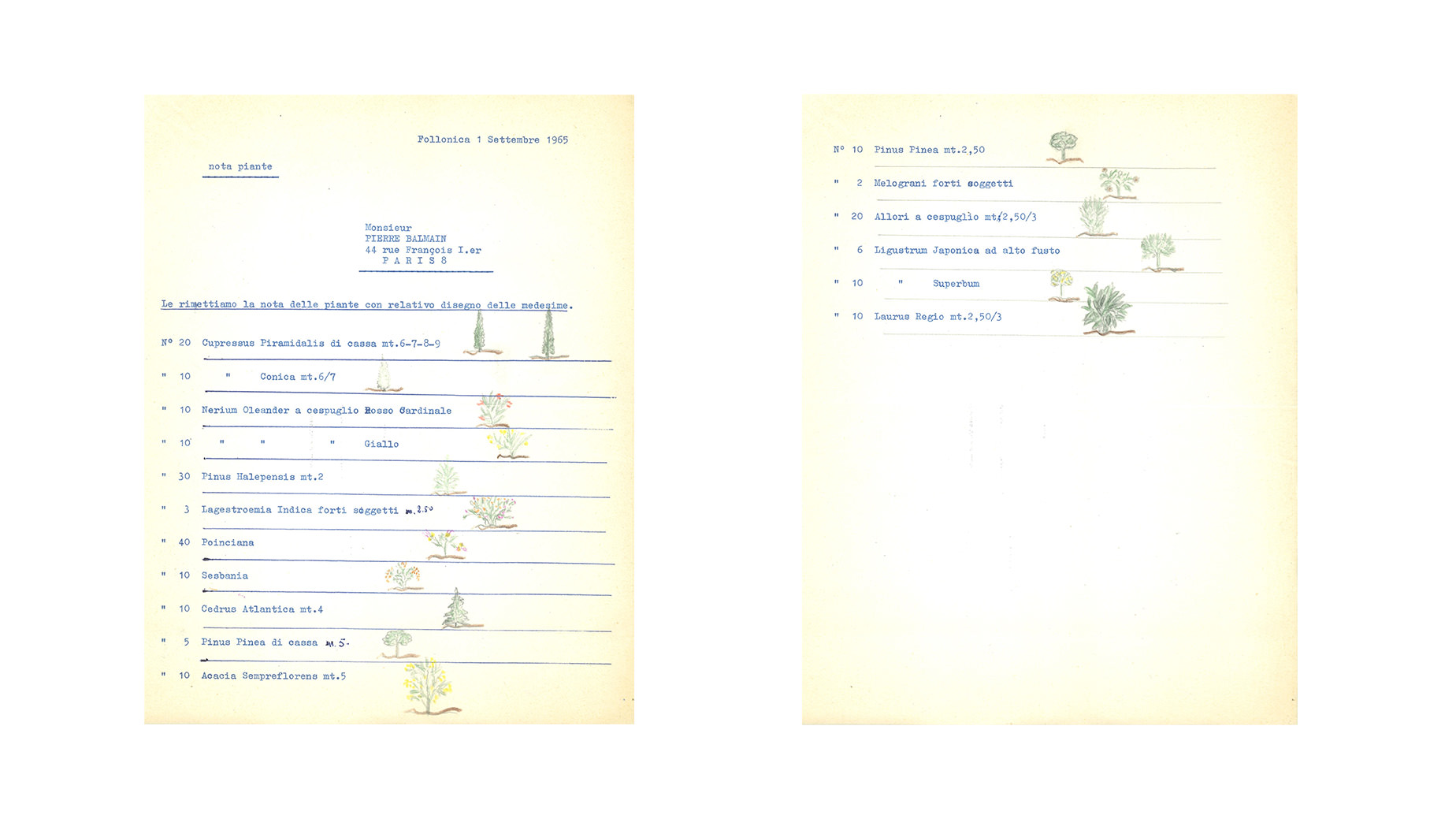
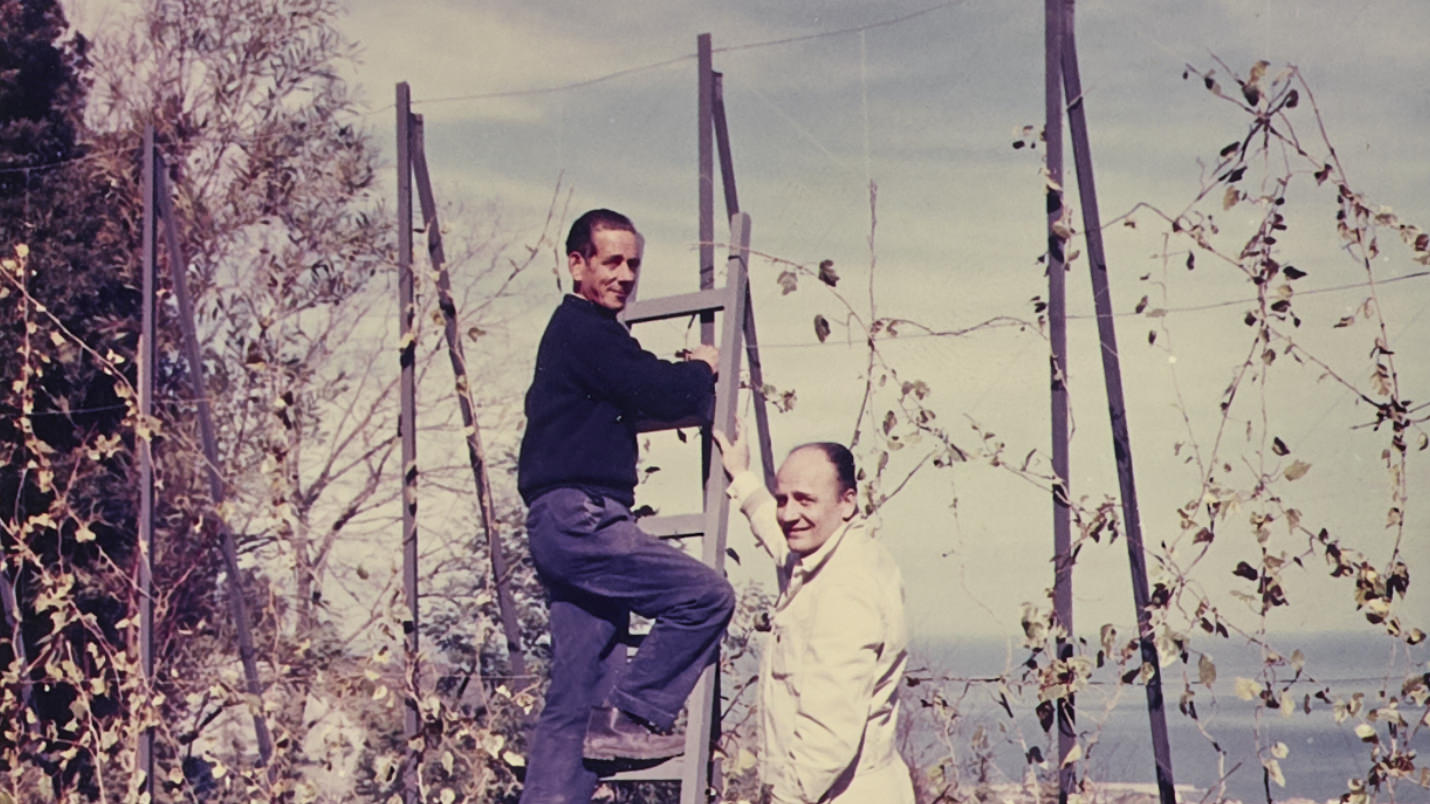
Photos credits
01: Pierre Balmain creates the Villa Balmain garden (1960); Collection: Balmain Heritage, Paris; ©Balmain Heritage
02: For the Villa Balmain garden, Pierre Balmain chose to plant cedar, pine, acacia and royal poinciana trees, as well as oleander, pomegranate shrubs; Collection: Paris, Balmain Heritage; ©Balmain Heritage
THE BALMAIN BEES
Since the late ‘40s, the bee, often set inside a circle, was a favorite symbol for Pierre Balmain’s jewelry designs—and the designer also incorporated that same image for his own distinctive ex-libris mark. In addition, many of his couture designs incorporated the precise and eye-catching hexagonal pattern of the honeycomb. And, after 1960, once he had finished his new retreat on the isle of Elba, bees began to assume even more importance in the life of Pierre Balmain. More than 150 years earlier, during his short, forced exile on the island, Napoleon Bonaparte had translated his own fascination with the symbol of the bee into an original and bold official symbol for the island principality that he ruled over: a white background crossed by a single red band decorated with three golden bees. That fascinating pattern remains a familiar emblem of the island today, decorating flags, coats of arms and public spaces—and it’s certain that Pierre Balmain spotted those symbols often during his Elba stays.
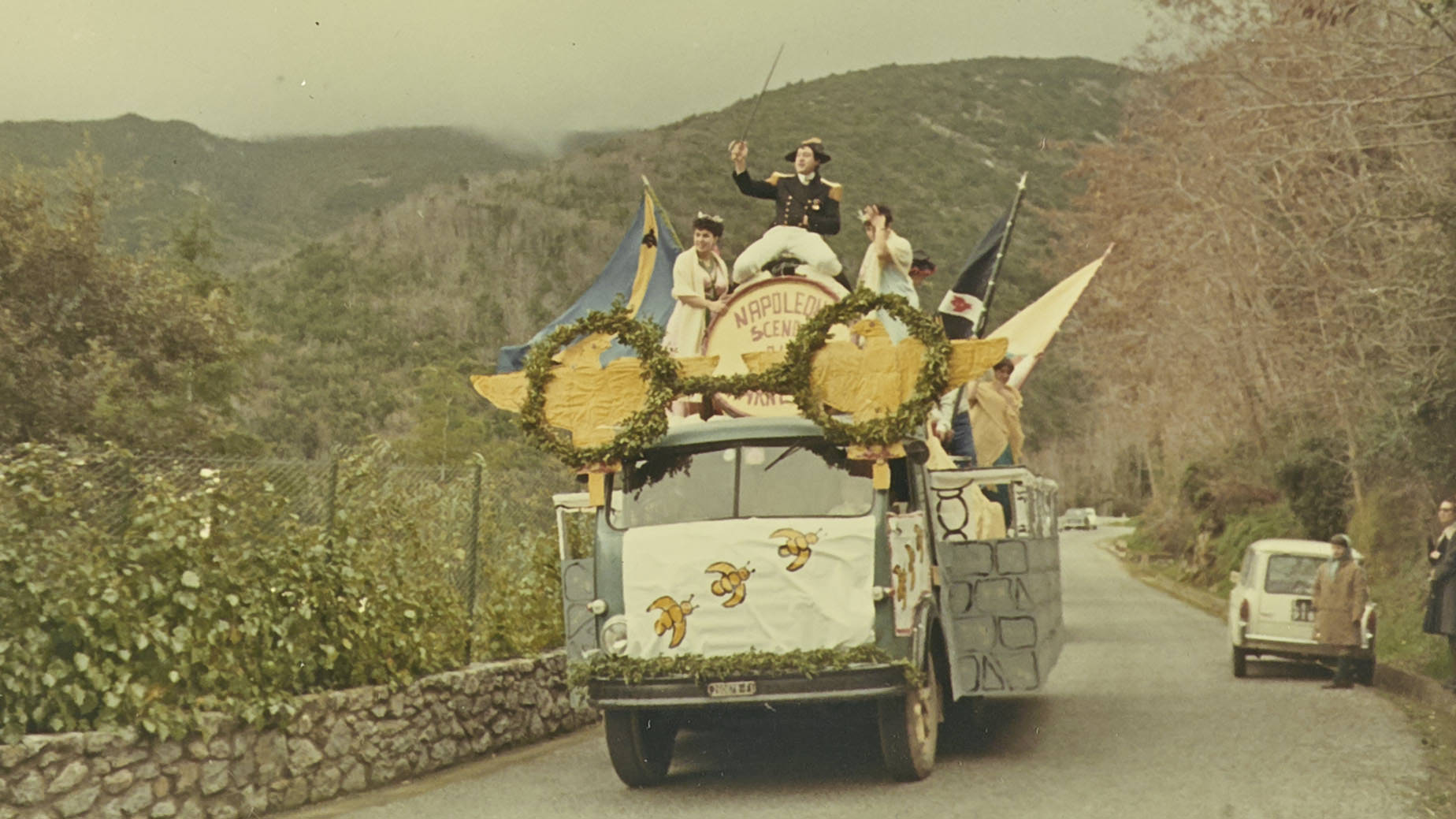
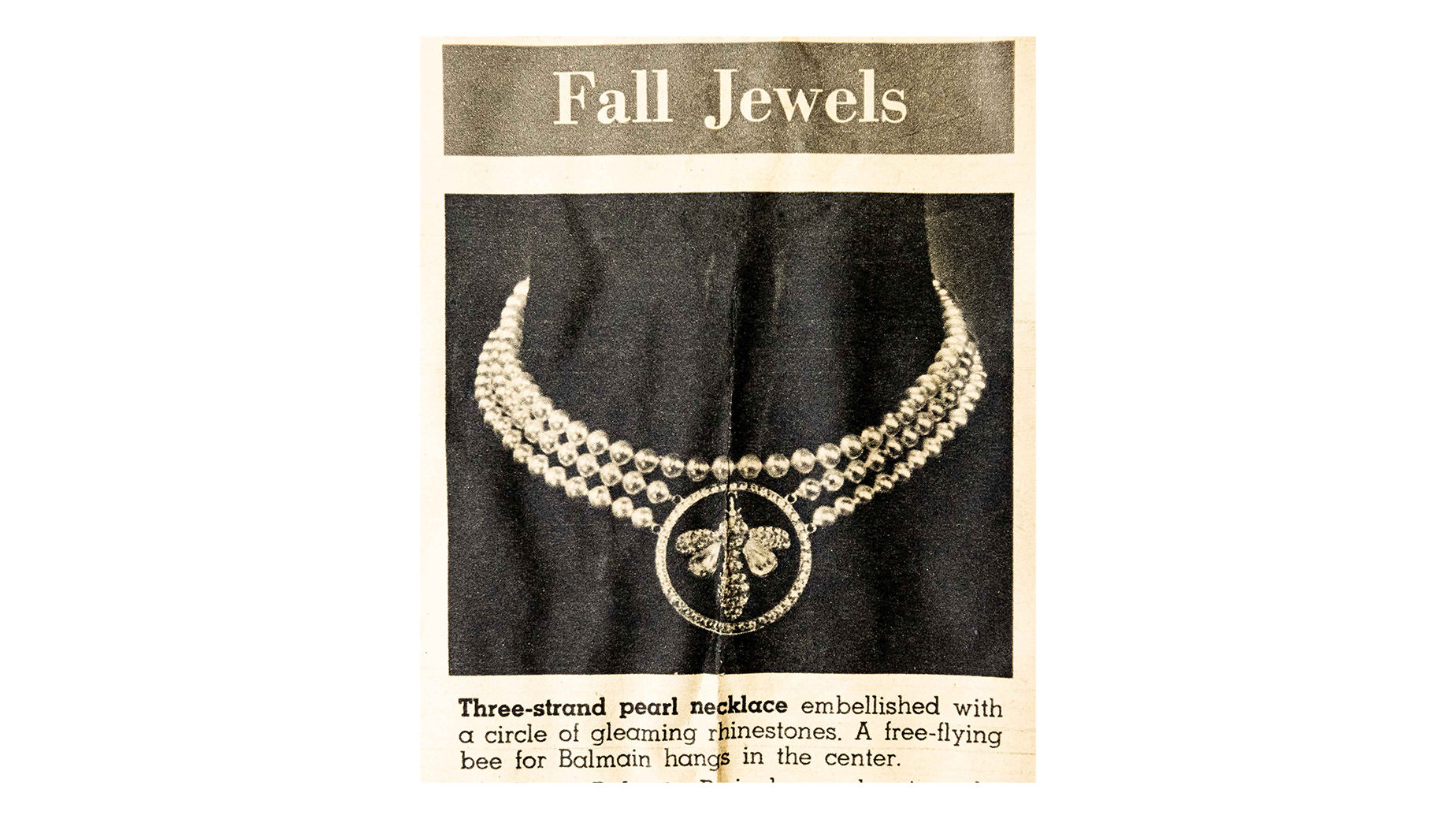
Photos credits :
01 : A 1966 village celebration in Elba featured a float decorated with the three golden bees and other Napoleonic symbols; Balmain Heritage, Paris; ©Balmain Heritage
02: Pierre Balmain’s 1950 jewelry designs for the house featured bees, as can be seen in this vintage press clipping highlighting the collection’s pearl necklace, which was embellished with a rhinestone circle with a “free-flying bee for Balmain” set in its center.©Balmain Heritage/Gabriel Popoff
BALMAIN’S PRECIOUS GEMS
Precious stones, due to their dazzling shapes, brilliance and tones, have always provided inspiration for Parisian couture designers—including Pierre Balmain. His love for rich and sparkling stones can be witnessed in the many gemstone names that he selected for his evening designs, including offerings entitled Sapphire, Ruby, Emerald, Onyx, Black Diamond and Ocean Pearl. Additionally, gemstones have a particularly strong connection to Elba—the island is known for possessing an extraordinary richness in quartz, hematite, tourmaline, pyrite, azurite and malachite.
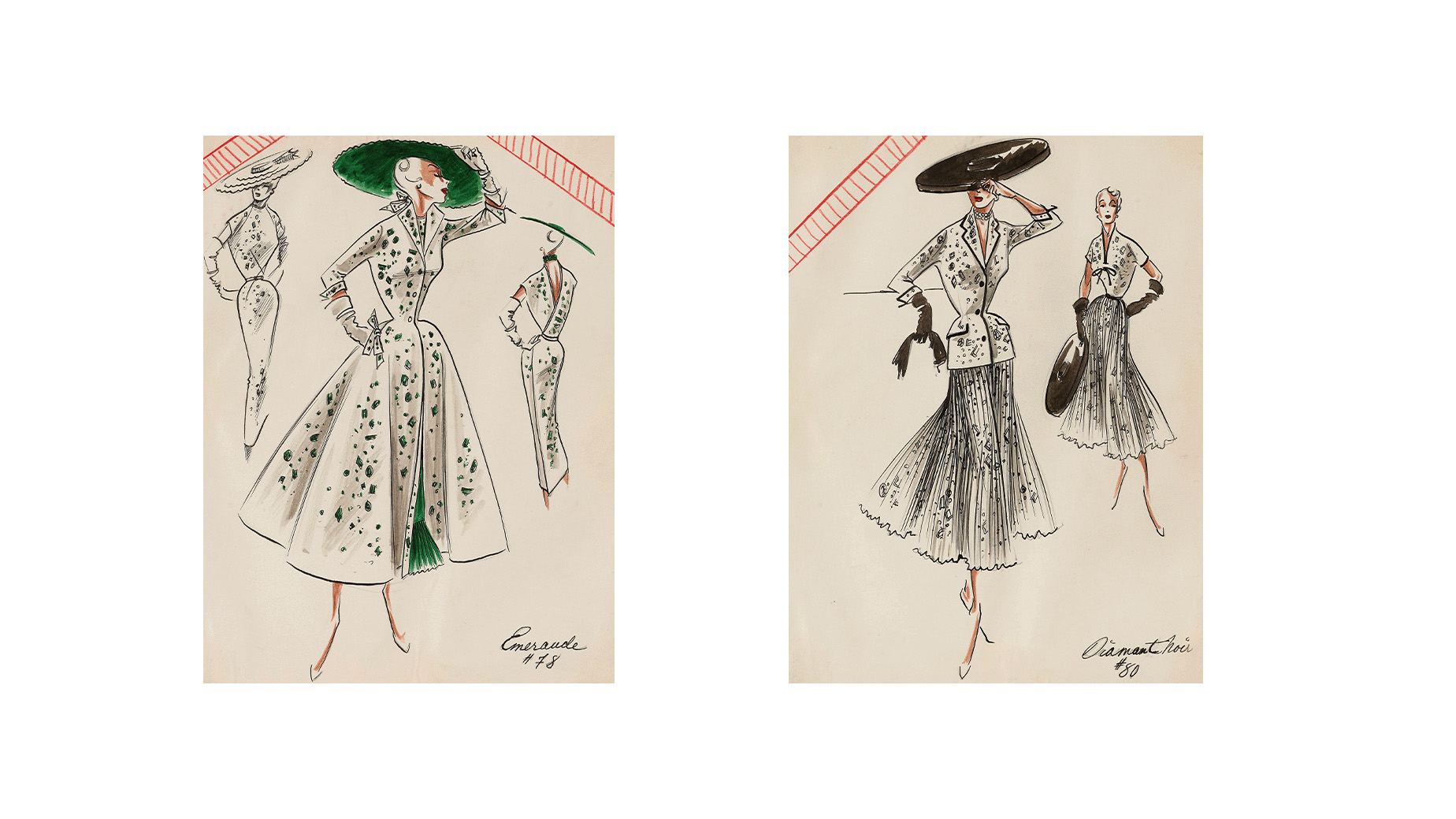
Photos Credits:
01: Balmain Haute Couture Spring Summer 1953: Sketch of Pierre Balmain’s “Emeraude”: Balmain Heritage, Paris; ©Balmain Heritage
02: Balmain Haute Couture Spring Summer 1953: Sketch of Pierre Balmain’s “Diamant Noir”: Balmain Heritage, Paris; ©Balmain Heritage
ALEXANDRE ARRECHEA’S HEXAGON GARDEN
Leonardo Ricci’s masterful blending together of Villa Balmain’s exterior and the interior spaces clearly inspired Cuban artist Alexandre Arrechea for his Miami Art Week installation. For “Hexagon Garden,” a site-specific virtual and physical commission shown at Superblue Miami, Arrechea has transported Villa Balmain to the Web3 universe, relying on LITO’s proprietary technology to create a large-scale, immersive environment enveloping Ricci’s construction. After slipping on their headsets, metaverse visitors will first spy an enormous golden ring floating around Arrechea’s reimagination of Ricci’s one-of-a-kind structure—and, as they approach, the ring reveals the precise geometric pattern of a honeycomb.

Arrechea allows his digital honeycomb to make very clear the connection between the luxuriant gardens and sleek interior spaces of Balmain’s island retreat. Pierre Balmain grew a multitude of exotic plants and flowers on his grounds—flora that he had gathered during his many travels to all corners of the world. The honeycomb that Arrechea has crafted is pollenated by the bees working in Villa Balmain’s fruitful garden. Constantly buzzing between the vegetation, the golden ring and the Villa’s interior, Arrechea’s bees work to transport an entirely new type of pollen—an array of precious stones—depositing the gems inside the Villa’s new honeycombs, creating impressive patterns that echo the distinctive lines and curves of Villa Balmain’s silhouette and which eventually coalesce into a series of jeweled masks.
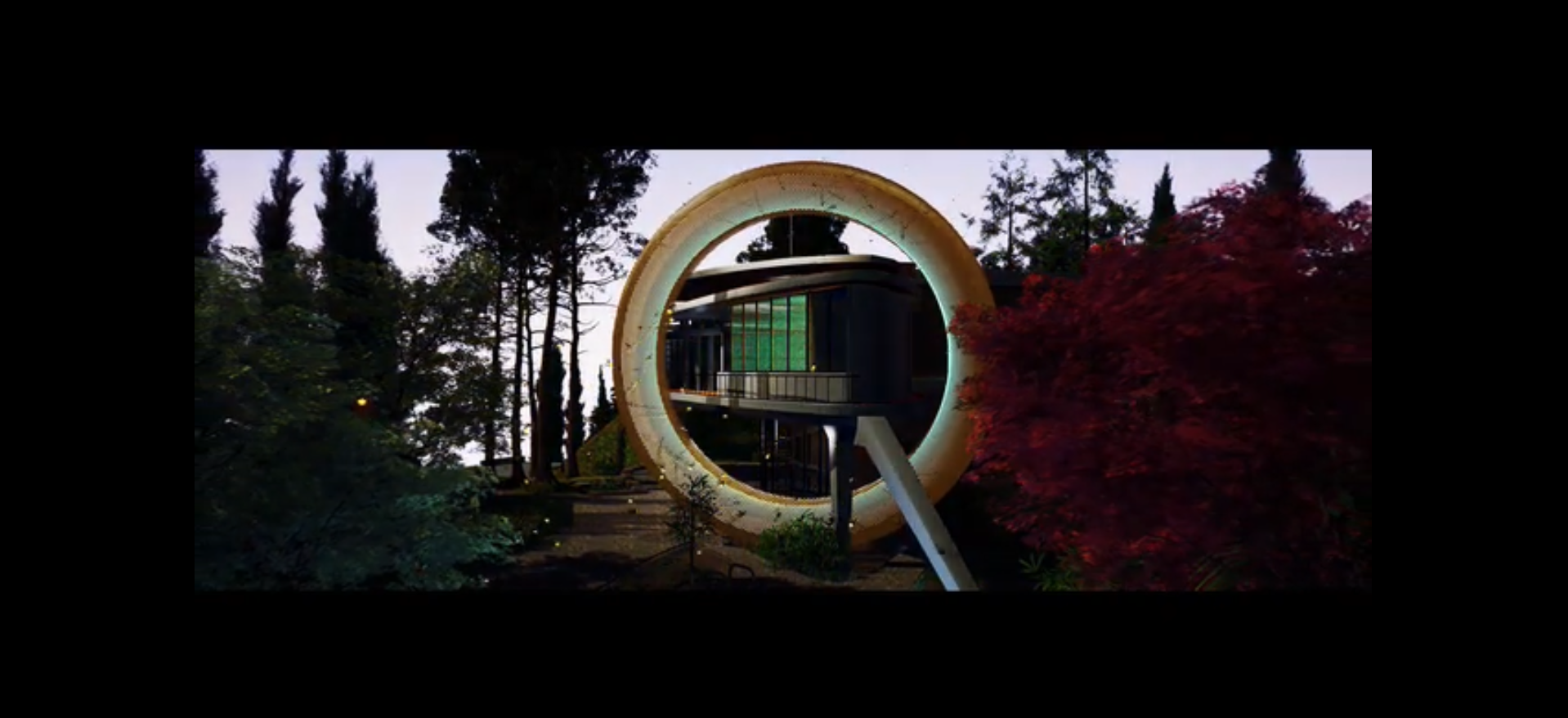
Photo credits :
The House And The Ring; 2022 iPad creation; ©Alexandre Arrechea
Video credits :
Hexagon Garden; ©Alexandre Arrechea; Superblue Miami; Curated by Direlia Lazo; Music and Sound Design by Alí Alvarez; Produced by Liaisons; Powered by LITO Hi-Rnd© Technology
ALEXANDRE ARRECHEA’S MASKS
Masks have been a recurring theme in Arrechea's recent work. He often turns to them to construct urban visages that reflect both the Caribbean’s original aboriginal culture and its strong African heritage. For this project, Arrechea's metaverse masks are completed by the surprising “pollen” carried by the bees—pollen transformed into emeralds, pearls and onyx—for these are powerful gems that possess their own distinct spirituality, while also holding a strong significance for Balmain’s luxury heritage.
Alexandre Arrechea: “The idea of these precious masks builds directly upon previous work that I created in Cuba. In Havana, I was constantly taking photos of the city’s different corners—aged façades that were exposed to bright light or set deep in the shadows. After I built up a vast collection of photos, I began to combine portions of the different photos to compose my masks. That process of creating entirely new images from a series of unconnected city details reflected a concept that has always fascinated me—that of generating completely new meanings via the assemblage of many different fragments. So, for this project, I’ve returned to that original inspiration, selecting an array of Villa Balmain architectural pieces and tying them to the many journeys of the garden’s bees—and those bees eventually assemble this entirely new bejeweled image from that series of fragmented perspectives of the Villa Balmain.”
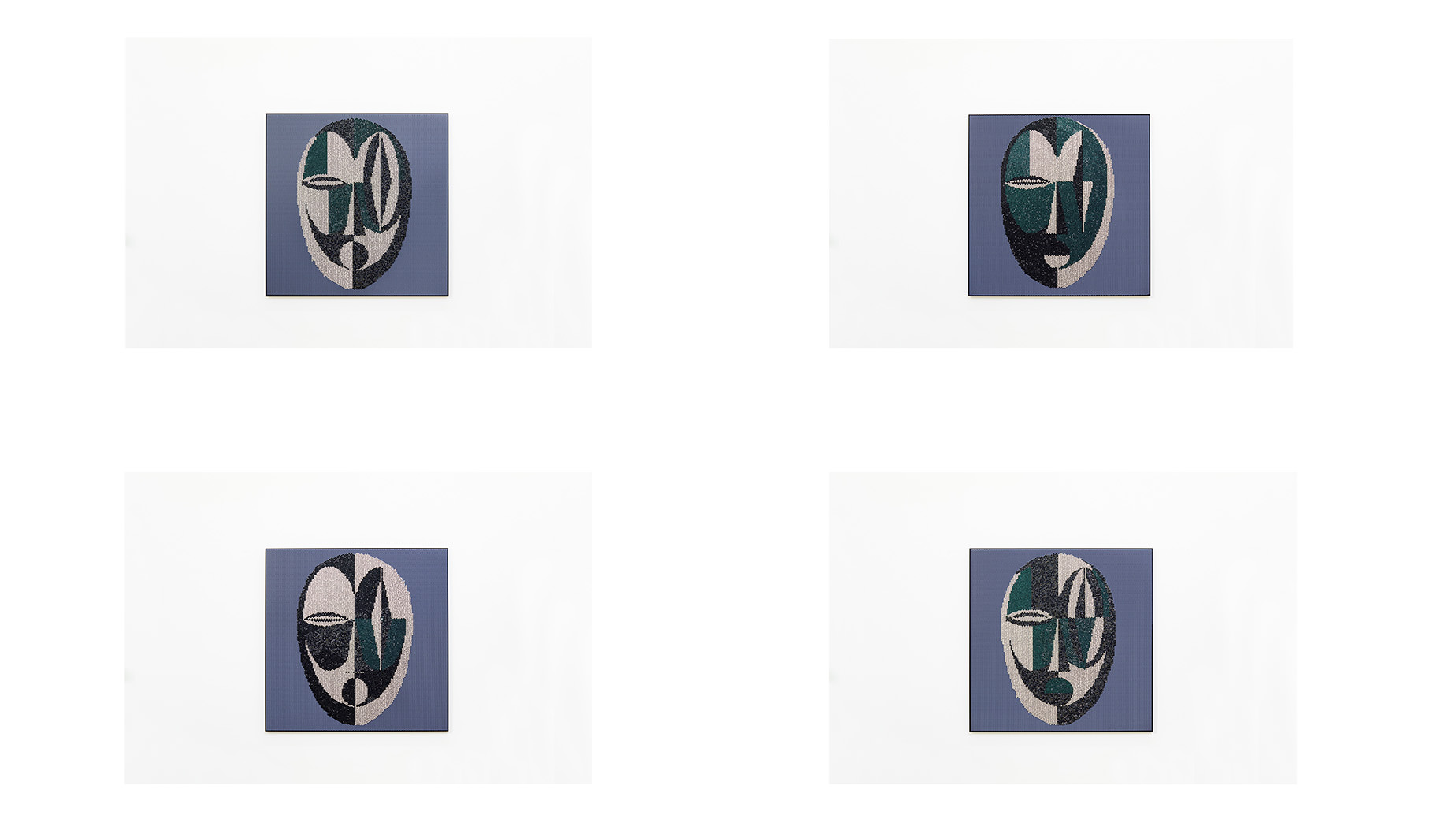
All Masks: Hexagon Garden; ©Alexandre Arrechea; Superblue Miami; Curated by Direlia Lazo; Music and Sound Design by Alí Alvarez; Produced by Liaisons; Crystals: Swarovski; High-rendered print, powered by LITO Hi-Rnd© Technology, signed by the artist on the back
About Balmain
More than 75 years ago, when Pierre Balmain first introduced his “New French Style,” it immediately became clear to all that his eponymous house was offering a distinctly fresh, bold, and feminine conception of haute couture, one which broke with many of the well-established conventions of the era. His audaciousness paid off. Pierre Balmain became one of the handful of young French talents who ushered in the mid-century golden age of couture and helped to re-establish Paris as the world’s fashion capital. Since 2011, Balmain Creative Director Olivier Rousteing has been inventively building upon Pierre Balmain’s extraordinary legacy, while always remaining true to his own determination to design clothes that reflect the way his inclusive, powerful, and global Balmain Army wishes to live today. The result is a unique and instantly recognizable Balmain silhouette, style and attitude that highlights the singular craftsmanship of the house’s celebrated ateliers, while consistently referencing a rich Parisian heritage.
DISCOVER BALMAIN COLLECTIONS
About Alexandre Arrechea
Alexandre Arrechea (1970, Trinidad, Cuba) is a Cuban contemporary artist, living and working between Madrid and Miami. Arrechea was one of the founding members of the Cuban collective Los Carpinteros, working with his Los Carpintero partners from 1991 until 2003, when he began his solo career. Arrechea’s work focuses on large-scale installations, with the artist working with a multitude of art forms—sculpture, watercolors, drawings and videos—in order to center his focus on issues of history, memory, politics and the power relationship existing in today’s urban spaces. Arrechea’s preference for site-specific creations allows him to explore the ideological and philosophical legacy of the surrounding context, creating an enhanced engagement with the audience.
About Villa Balmain
Commissioned by the Parisian couturier Pierre Balmain (1914-1982) and built by the visionary Italian architect Leonardo Ricci (1918 -1994), Villa Balmain perfectly embodies the exceptional heritage that lies behind Balmain’s singularly daring spirit and outlook. Constructed on the Italian isle of Elba between 1958 and 1960 and passionately preserved for decades, the impressive structure continues to offer today a remarkable perspective on Pierre Balmain’s unique personal taste, as well as a deeper understanding of the origins of the iconic audacity that has long set apart the designer’s eponymous French fashion house.
Pierre Balmain envisioned Villa Balmain as a haven of peace, far away from the frenzy of his Parisian professional life. He dreamt of a hidden, lush island escape, where he could refresh, relax and think about his next collections. The Villa’s radical elliptical architecture, constructed from both local granite and reinforced concrete, has been compared to a spaceship, a boat set for sail, and “a dragon-fly perched on the mountain-side.” Balmain himself summed it up as a “Hollywood-style” creation. Ricci’s structure capitalizes on the dynamism and fluidity of curving lines, while making very clear why the architect was recognized as a master in integrating his creations into the surrounding landscape.
The Villa’s interiors, also conceived by Pierre Balmain, combine an eclectic blend of neoclassical and exotic furnishings, marble pavement, luxurious silk textiles and souvenirs from Balmain’s global travels—all conversing in an unexpected manner with Leonardo Ricci’s sleek, smooth lines. A rarity in the world of late-50s design, Villa Balmain makes very clear Pierre Balmain’s extraordinary openness to the fresh and cutting-edge ideas in architecture and décor—echoing the constantly evolving artisanal embellishments and strict tailoring that can be spotted in the house’s couture offerings from the same period.
About Leonardo Ricci
Leonardo Ricci (Rome, June 8, 1918 - Venice, September 29, 1994) was one of the major forces of the modern "Florentine school.” He was a pupil and later collaborator of the great Italian architect, urban planner and designer Giovanni Michelucci, a colleague of the architect and painter Leonardo Savioli, a friend of Albert Camus (with whom he shared a theoretical approach derived from Existentialism), a painter attracted to Picasso's primitivism and Pollock's action-painting and, of course, an exceptional architect.
About LITO
Based in Bregenz, Austria, LITO applies its Hi-Rnd© proprietary technology to scan, digitize and render artwork editions and cultural heritage sites. In turn, this creates comprehensive digital archives that may be applied to research, the Metaverse and more. LITO renders its editions in direct collaboration with contemporary artists, artist estates, museums and institutions globally, as well as collaborators from the worlds of high fashion, luxury and wider contemporary culture. Using a dynamic retail model of online drops, partnerships and more, LITO stands to revolutionize the editions market–and, by extension, the art experience, so everyone can live with and experience a masterpiece.
About Swarovski
Swarovski is a place where magic and science meet. Swarovski unifies all parts of its organization under one spellbinding idea and brings forward a wondrous new world of crystal craftsmanship. Founded in 1895 in Austria, the company designs, manufactures and sells the world’s highest quality crystal, gemstones, Swarovski Created Diamonds and zirconia, jewelry, and accessories, as well as crystal objects and home accessories. Together with its sister companies Swarovski Optik (optical devices) and Tyrolit (abrasives), Swarovski Crystal Business forms the Swarovski Group. A responsible relationship with people and the planet has always been an integral part of Swarovski’s heritage. This manifests today in the company’s well-established sustainability agenda with youth-focused education programs and foundations to promote human empowerment and conserve natural resources to achieve positive social impact.
About The XRP Ledger
The XRP Ledger (XRPL) is an open source, public and decentralized Layer 1 blockchain led by a global developer community. It is fast, energy-efficient, and reliable. For more than ten years, it has been the blockchain best suited to enable settlement and liquidity of tokenized assets at scale. With ease of development, low transaction costs, and a knowledgeable community, it provides developers with a strong open-source foundation for executing on the most demanding projects –without impacting the XRPL’s lean and efficient feature set. XRPL enables a wide variety of services and use cases including payments, decentralized finance, and tokenization.
DISCOVER BALMAIN COLLECTIONS
